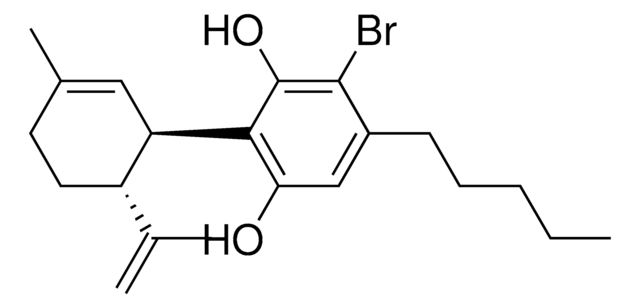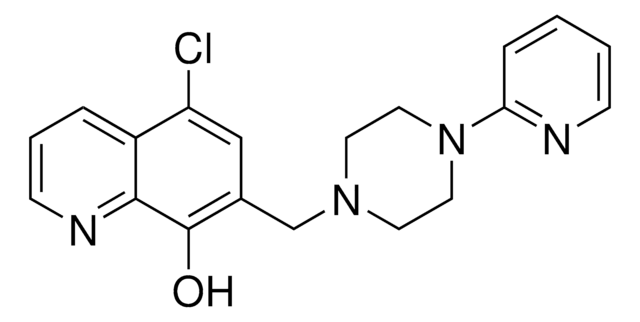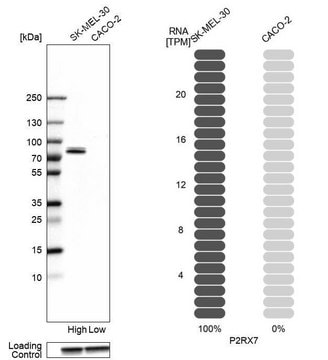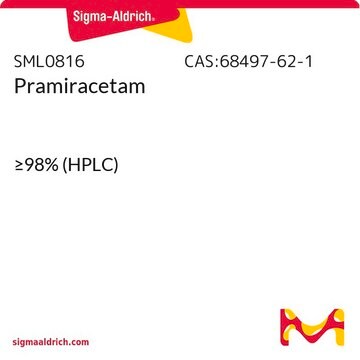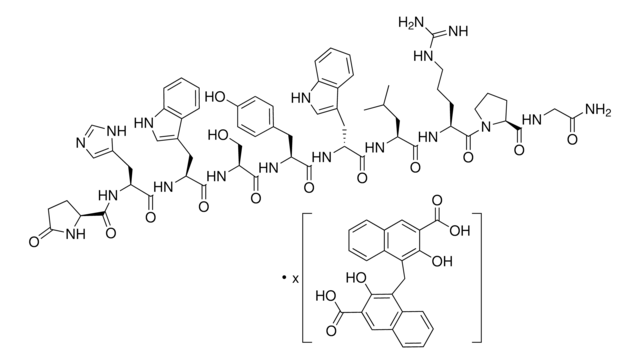SML1747
JNJ-55511118
≥98% (HPLC)
Synonym(s):
5-[2-Chloro-6-(trifluoromethoxy)phenyl]-1,3-dihydrobenzimidazol-2-one
Sign Into View Organizational & Contract Pricing
All Photos(1)
About This Item
Empirical Formula (Hill Notation):
C14H8ClF3N2O2
Molecular Weight:
328.67
UNSPSC Code:
12352200
NACRES:
NA.77
Recommended Products
Quality Level
assay
≥98% (HPLC)
form
powder
color
white to beige
solubility
DMSO: 25 mg/mL, clear
storage temp.
2-8°C
Biochem/physiol Actions
JNJ-55511118 is also known as 5-[2-chloro-6-(trifluoromethoxy)phenyl]-1,3-dihydrobenzimidazol-2-one. It acts as an anticonvulsant or neuroprotectant. It is considered as a reversible α-amino-3-hydroxy-5-methyl-4-isoxazolepropionic acid (AMPA) receptor inhibitor, mainly in the hippocampus region.
JNJ-55511118 is an orally available, brain penetrant, potent and selective negative modulator of AMPA receptors that requires the presence of the accessory protein CACNG8 (TARP-γ8). JNJ-55511118 exhibit potent inhibition of neurotransmission within hippocampus, and a strong anti-convulsant effect.
signalword
Warning
hcodes
Hazard Classifications
Eye Irrit. 2 - Skin Irrit. 2 - STOT SE 3
target_organs
Respiratory system
Storage Class
11 - Combustible Solids
wgk_germany
WGK 3
flash_point_f
Not applicable
flash_point_c
Not applicable
Certificates of Analysis (COA)
Search for Certificates of Analysis (COA) by entering the products Lot/Batch Number. Lot and Batch Numbers can be found on a product’s label following the words ‘Lot’ or ‘Batch’.
Already Own This Product?
Find documentation for the products that you have recently purchased in the Document Library.
Michael P Maher et al.
The Journal of pharmacology and experimental therapeutics, 357(2), 394-414 (2016-03-19)
Members of the α-amino-3-hydroxyl-5-methyl-4-isoxazole-propionic acid (AMPA) subtype of ionotropic glutamate receptors mediate the majority of fast synaptic transmission within the mammalian brain and spinal cord, representing attractive targets for therapeutic intervention. Here, we describe novel AMPA receptor modulators that require
Our team of scientists has experience in all areas of research including Life Science, Material Science, Chemical Synthesis, Chromatography, Analytical and many others.
Contact Technical Service